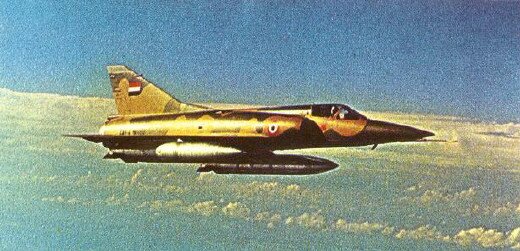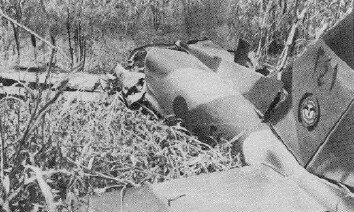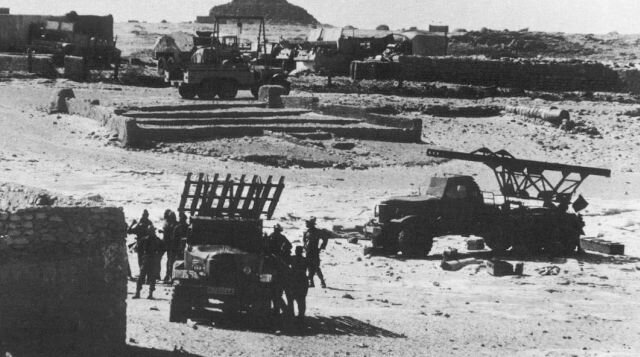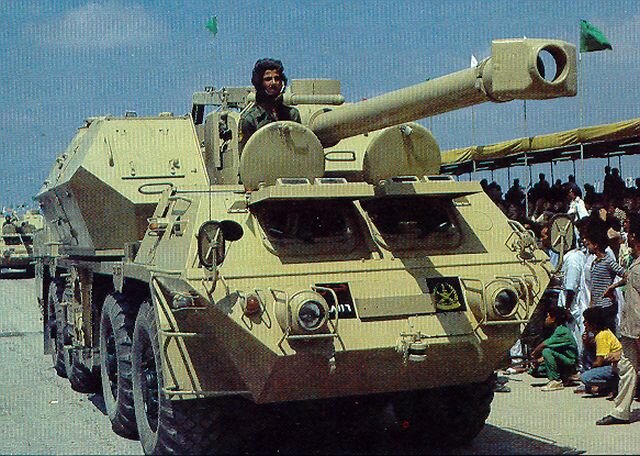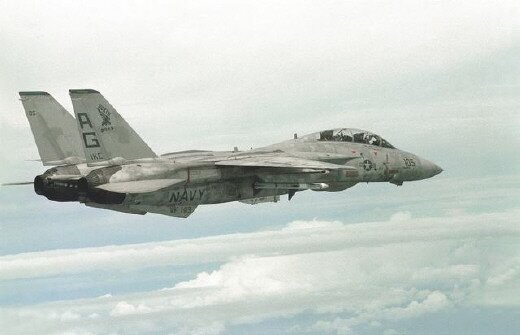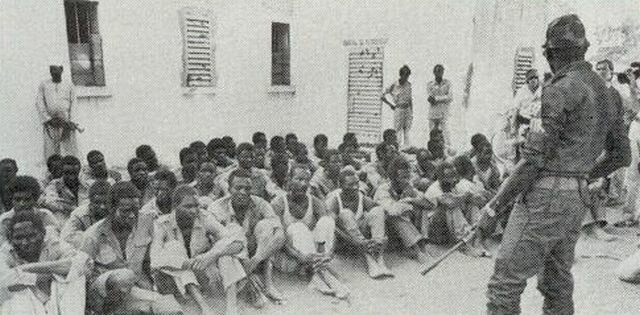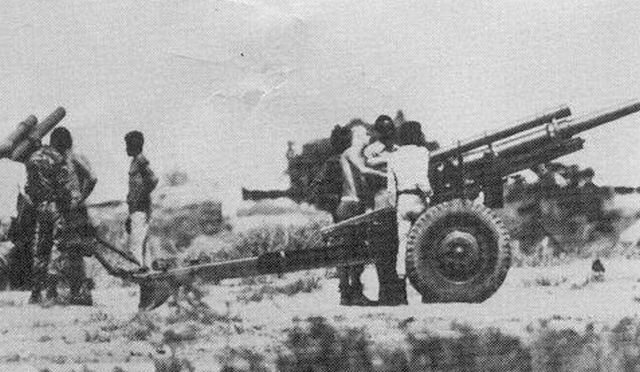|
From ACIG.org Western & Northern Africa Database
One of the main reasons for the US operations off the Libyan coast in summer of 1981, however, was actually the tense situation in Chad, where a confrontation between the Libyan-supported government and western-supported opposition threatened to spread to Sudan as well. In the fall of 1980 the Libyans invaded Chad. The attack began with a series of heavy strikes flown by Tu-22s, MiG-25s and MiG-23s against the northern oasis and city of Faya-Largeau. Under the cover of LARAF airstrikes, two brigades of some 7.000 Libyan troops and over 100 T-72 tanks poured into the country, following the forces of the Chad's General Kamoue, who rebelled against the government of the former Defense Minister Hissen Habré (leader of the "Armed Forces of the North" - AFN) and joined Goukouni Oueddei (ironically, Kamoue and his troops were Christians, while Habré and his forces mainly Moslems). On 4 November 1980, Kaddaffi visited the troops in Chad, and ordered Col. Radwan Salech Radwan, commander of the Libyan forces in Chad, the capture of N'Djamena, Chad's capital. For more than a week, Libyan fighters bombarded N'Djamena, causing heavy damage and casualties, before the two armoured brigades charged.
Outgunned and outmanned, AFN threw back at least two attacks, destroying up to 50 Libyan tanks before the Libyan firepower proved too much. Even before the expected street battles could follow Habré and the survivors of the AFN disappeared into the desert: part of them fled into Cameroon, the rest to the desert city of Abéché. This was Kaddaffi's first major victory in any of the adventures he started into Africa. Despite the fall of N'Djamena, throughout the whole 1981 the LARAF was intensively engaged in hunting the oppositionals around Chad, frequently deploying not only Tu-22s and MiG-25RBs to bomb different places around the country, but also other tactical aircraft. In several cases, Libyans also bombed Sudanese towns, and in October 1981, the USN was again compelled to send a carrier towards the Gulf of Sirte, while the USAF deployed two E-3As of the 960th AWCS to Cairo West, in order to keep a watchful eye of the situation. By November, the tensions lessened, after the Organization of African Unity (OAU) managed to negotiate a cease-fire between warring fractions, and placed a peace-keeping force in Chad.
With the OAU troops in position Oueddei requested the Libyan troops to leave Chad. The Libyans were bitter, but agreed to withdrew (most) of meanwhile over 10.000 troops they had in the country. In fact, they did this so carefully, their troops loaded event the wrecks of their downed aircraft, destroyed tanks and jeeps into US-built LARAF C-130s and Soviet-built Il-76 transports, and flew everything back to Libya. Up to 34 flights of LARAF transports to N'Djamena a day were recorded at the time. After completing the evacuation, in the best military style, Col. Radwan personally led a column of tanks and jeeps out of the capital of Chad and towards the Libyan border, no less but 700 miles away. By 1982 the situation in Chad changed completely, however. Reinforced by Western-supplied weapons, only days after the Libyan pull-out Habré's AFN - ignoring the OAU-troops completely - captured N'Djamena, and established itself in the south of the country. Simultaneously, the Sudanese armed forces were reinforced by deliveries of US weapons worth $200 million, including anti-aircraft weapons, and consequently the LARAF had to cease air strikes against AFN bases in that country. Nevertheless, the Libyans were reinforcing as well. At the time, they were receiving their last Mirage F.1s from France, and more SAMs from the USSR, while also purchasing weapons even from the USA - via a clandestine company run by several US citizens. These and many other weapons were soon to be used again. In June 1983, Libyans finally mounted a new invasion of Chad, apparently supporting the new opposition created by Oueddei, but actually acting in their own interests. This time two mechanized brigades were deployed, supported by a number of helicopters and fighter-bombers. The LARAF was again very active, flying dozens of CAS sorties, but sometimes also using its Tu-22Bs to bomb government bases and forts. Actually, intensive LARAF operations were influential for the success of the Libyan offensive, in which - by July 1983 - the strategically important Faya Largeau oasis was once again captured.
The French, which were already indirectly involved on both sides - by selling weapons to Tripolis while simultaneously supporting the new Chadian government - reacted by dispatching supplies and arms to N’Djamena, while Republic of Zaire deployed 1.750 troops and three Mirage 5Ms. In reaction the Libyans reinforced their troops in Chad, and built a large airfield at Aouzou, where from now on up to 40 LARAF aircraft - including Tu-22B bombers - could be stationed. Both sides restrained from provoking a larger war and by the late summer of 1983 the situation in Chad stabilized: norht of the country was now firmly in Libyan hands and the Chadian government could do nothing about this because of the Libyan air superiority. The French were not interested to fight a war against Libya, consequently they only limited their involvement to support of Habré's government; the OAU troops were forced to pull out, while the Zaireans were attempting to train AFN troops.
The Libyan drive deep into Chad finally forced the French and the USA to react. Already in late July, the CVBG with USS Eisenhower approached the Gulf of Sirte, and on 1st of Agust, two F-14As of the VF-142 had to force two MiG-23MS of the LARAF away from their carrier. Four days later, Tomcats of the VF-143 intercepted five Libyan MiG-23MS, some 220kms south of where the USS Eisenhower operated.
Meanwhile, Paris concluded that there were two possibilities for a military intervention: the plan for the first, more risky and certainly leading to a wider war with Libya, was code-named Operation „Oraqua“, and included even dropping of a full regiment of paras at Faya Largeau. The other plan, Operation „Manta“, planned only a reinforcement of the Chadian government with weapons and supplies, and securing the delivery of these, as well as blocking any eventual Libyan drive into the southern Chad. In the end, the second solution was chosen, and the Operation Manta was initiated on 5 August, with the landing of five French Army SA.330s at N’Djamena. In the following two weeks, a detachment of SA.341 Gazelle helicopters (armed with HOT ATGWs), followed, together with 1.500 troops of the Foreign Legion. Also, the French Air Force deployed six Jaguars, four Mirage F.1Cs, two Transall tankers, and two Atlantiques to N’Djamena, while the USAF deployed two E-3As, two KC-10s and eight F-15Cs to Khartoum, in Sudan. In order to demonstrate their capabilities, in September 1983, the USA and Egypt also mounted the annual exercise „Bright Star“, in which a full division of the US Army and at least a wing of F-4Es was deployed in Egypt. The exercise, however, was used also in order to send further shipments of weapons to the Chadian government. The pressure upon Libya could not stop the fighting between the Chadian Army and the opposition as well as Libyans in Chad. On the contrary, LARAF Mirages flew continuous patrols along the front-lines, while fighter-bombers flew a series of strikes against the bases of governmeent forces. On 24 January 1984, an oppositional column even raided the city of Ziguey, kidnapping two French citizens in the process. The raid provoked a fierce response from the French Air Force, however, during the retaliation strikes one Jaguar of the EC 11 was shot down over northern Chad and the pilot killed. While officially explaining that the downed Jaguar was on a "reconnaissance mission", the French government was angered by the loss, and could not ingore the new situation. In reaction three battalions of the Foreign Legion were deployed along the 16th Parallel, in order to prevent any similar Libyan incursions in the future.
What exactly happened afterwards remains unclear: there are not many reports about the fighting in Chad through late 1983 and early 1984. The fact is, however, that the Libyans stopped their offensive operations, and it is also known, that in additional operations over the northern Chad, on 16 April 1984 another Jaguar was lost, apparently crashing into a sand dune while operating at a very low level. The pilot was killed. The Libyans were now engaged with reinforcing and stabilizing their positions in Chad. In November 1984, with Eastern German and Yugoslav help they started building a new large base near Ouadi Doum, a barren place in the middle of the hot Saharan desert, due east of Faya Largeau. The airfield at the later oasis was also enlargened, while two new were built at Tanoua (in the Aouzou Strip), and near Fada.
© Copyright 2002-3 by ACIG.org |

